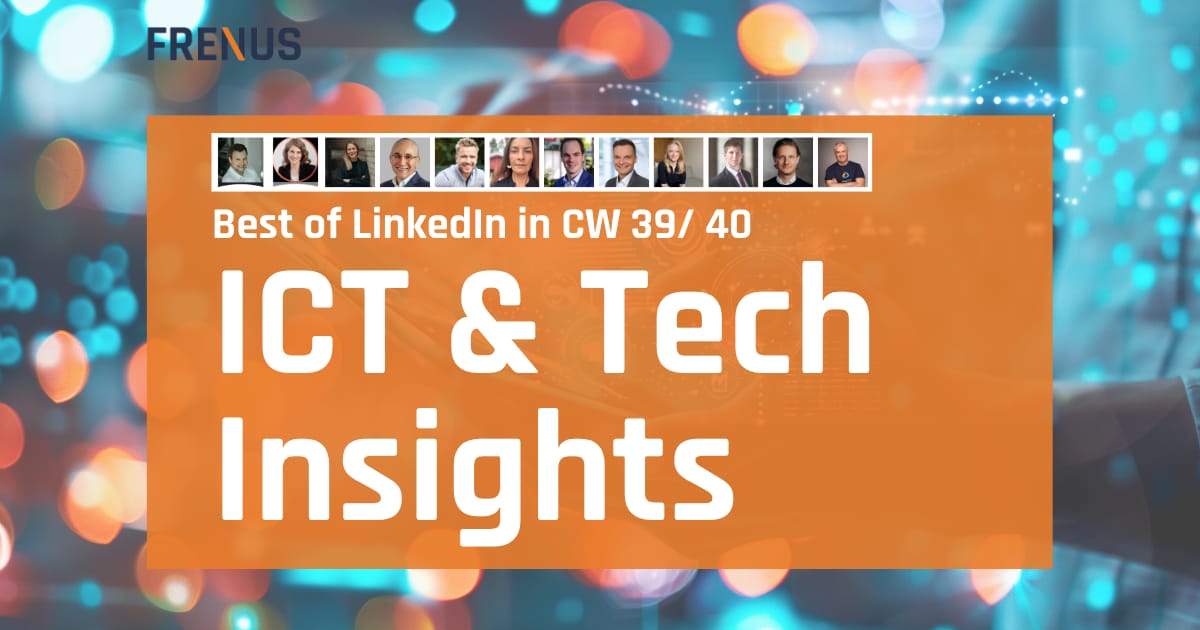Methodology: Every two weeks we collect most relevant posts on LinkedIn for selected topics and create an overall summary only based on these posts. If you´re interested in the single posts behind, you can find them here: https://linktr.ee/thomasallgeyer. Have a great read!
Cybersecurity
Zero Trust moved from aspiration to operating model, with emphasis on continuous verification and least-privilege access across users, devices, and workloads.
Post-quantum readiness rose on the agenda, with calls to begin migration to post-quantum cryptography now to protect long-lived data.
Vulnerability management adapted to external database bottlenecks, shifting toward risk-based prioritization rather than raw CVE counts.
Security hygiene remained foundational: stronger passwords, MFA, and password managers featured as non-negotiables.
AI in defense demanded readiness planning, tying model trustworthiness to operating controls and measurable outcomes.
Continuous monitoring and proactive detection were reinforced as essential to stay ahead of evolving threats.
Identity emerged as the control plane for AI agents, with identity observability positioned as key to protecting agentic workflows.
Mission orientation challenged “security first” dogma, arguing that risk decisions should be anchored in business objectives.
Healthcare breach pressure underscored the need to accelerate Zero Trust adoption and ransomware preparedness.
VPN dependencies were flagged as fragile for remote access, with Zero Trust network access advocated as the successor.
AI and Agentic AI
“Digital Passport” concepts using decentralized identifiers and verifiable credentials were proposed to authorize and trace AI deployments.
Enterprise adoption patterns stressed AI trust, readiness, and control, aligning model use with governance and compliance.
Guardrails for agentic AI centered on identity observability, ensuring agents are monitored, authenticated, and least-privileged by design.
A practical blueprint for implementing agentic AI in the enterprise emphasized governance, security, and value realization.
Shadow AI was called out as a material risk; guidance focused on visibility, policy, and safe enablement rather than blanket bans.
Quantum Tech
Security leaders were urged to start post-quantum cryptography adoption to future-proof sensitive data.
Quantum-enhanced AI was highlighted for faster training and improved problem solving, signaling convergence of fields.
Research milestones progressed, including multi-hour continuous quantum operation that addresses stability challenges.
Sector-specific methods were proposed to demonstrate quantum advantage, beginning with rigorous benchmarking in energy optimization.
Education and workforce development featured through profiles of emerging quantum educators and communities.
Data Centers and Infrastructure
Precision cooling for data centers was elevated as critical to service continuity and efficiency.
AI compute demand is set to multiply, with projections that AI data center power needs could quadruple within a decade, amplifying sustainability challenges.
Widely used energy models were critiqued for discrepancies, prompting calls for transparency and methodological rigor.
New regional capacity came online to support digital transformation agendas.
Policy and Sovereignty
Europe advanced a sovereignty-first stance, including a €1 billion investment push for AI innovation to reduce external dependencies.
Legislative and policy proposals targeted control, compliance, and sovereignty as core to digital competitiveness by 2030.
“Cognitive Sovereignty” reframed personal data defense in an era of pervasive digital exhaust.
Public-sector briefings emphasized countering AI-driven misinformation through literacy, safety, and security measures.
Partnerships and Launches
Enterprise infrastructure expansion continued, including a business network data center launch in Riyadh to support national digital goals.
The Digital Euro initiative progressed, with partners delivering an offline solution designed to be quantum-safe from inception.
Broader ecosystem collaboration underpinned digital currency pilots and payment security advancements.
Standards and Compliance
ISO/IEC 27001 adoption accelerated, with global certificate counts approaching the 100,000 mark, signaling mainstreaming of structured information security management.

